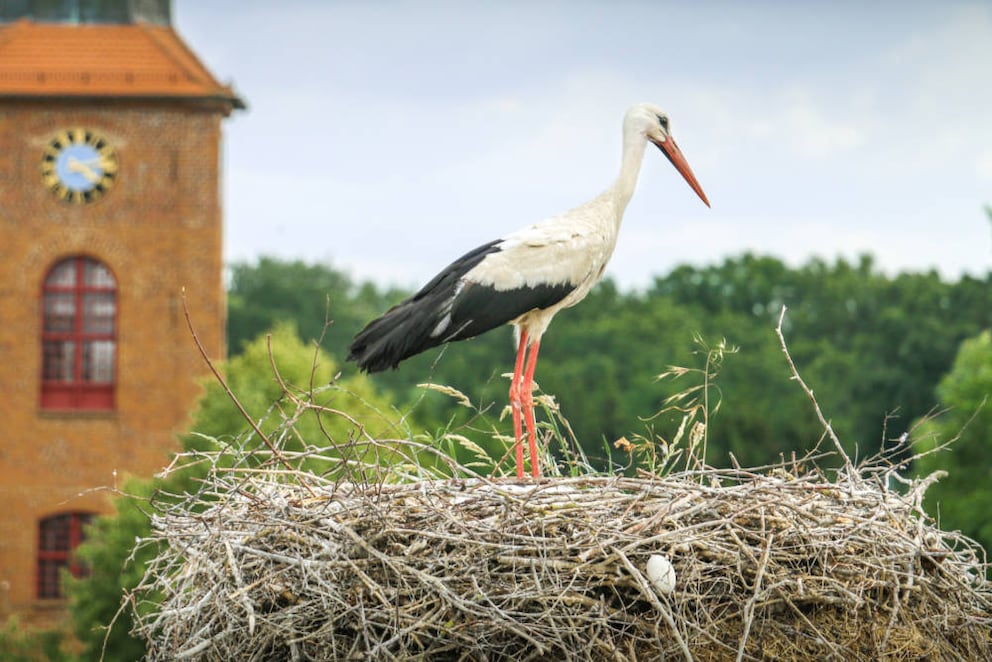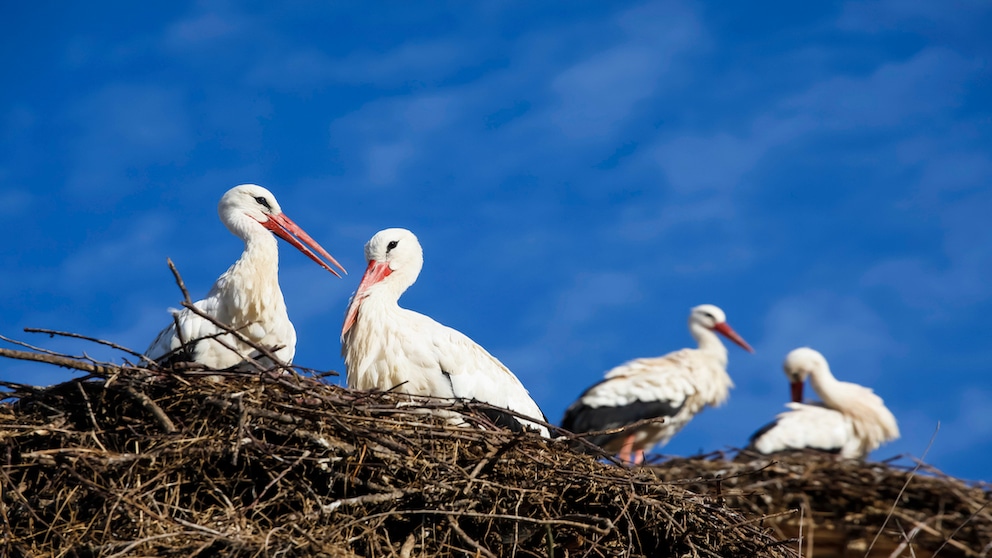September 2, 2024, 4:09 pm | Read time: 4 minutes
Nowhere else in Germany has as many storks as here: Every spring, the small village of Rühstädt becomes the scene of an extraordinary journey. And to ensure that the animals keep coming back, the locals give them a lot of help.
The sky above Brandenburg is a flawless cloudless blue, making for an idyllic day in the UNESCO Biosphere Reserve ‘River Landscape Elbe.’ Stepping into the quaint village of Rühstädt feels like entering a different realm where time slows its pace, a mere hour’s drive from the bustling metropolis of Berlin. In the tranquility of the lazy, warm afternoon, the only sound piercing the silence is the rhythmic clattering of storks, faithful to their annual return to Rühstädt.
No other village in Germany boasts a greater number of these regal birds. Their impressively large nests adorn nearly every rooftop. They nurture their young annually, turning Rühstädt into a visitor hotspot in the region. Watching the storks’ gliding flights or how they swoop across the fields in search of food is a spectacular sight. More than 30 pairs come every year; in 1996, there were as many as 44. According to “NABU,” Rühstädt was therefore honored as a “European Stork Village” by the Euronatur Foundation in the same year.
10,000 kilometers of travel
The locals love the black and white birds so much that they even repair their nests time and again. They do this, for example, in the form of the collective, the “Rühstädt Stork Club.” When asked by TRAVELBOOK, Nadine Bauer from the NABU visitor center said: “The animals would need a whole season to build a new nest. A skilled helper can install a new one on a roof within two hours.” Uwe Weltin, a member of the stork club, adds: “Every year in March, a nest campaign is carried out using a lifting platform, nests are completely renewed, nests that are too high are removed, and cleaning is usually necessary.”
On a beautiful day, Rühstädt casts an enchanting spell on its visitors with its picturesque village charm. A serene lane meanders among red brick houses topped with storks’ nests, leading to the heart of the village. Here, a stunning ancient church, erected in 1251, stands. Buses meander through only every few hours as if stumbling upon the village by chance.
Every year, when the birds “return home” from their winter quarters in Africa, they have a journey of up to 10,000 kilometers behind them. On the often flooded floodplains, fed by the mighty flowing Elbe, they find enough food for themselves and their offspring. The region is also a true paradise for animals in other respects. It is not unusual to see whole herds of deer, hares, geese, and cranes on a walk or bike ride – Rühstädt is on the popular Elbe cycle path – as well as more and more storks from April onwards.


With the kayak Adventures in the Benagil Cave in the Algarve

TRAVELBOOK author on Holnis A Look at the Beautiful Northernmost Tip of the German Baltic Sea Coast

One in every federal state 16 Extraordinary Christmas Markets in Germany
Stork watching via live cam
The storks are a majestic sight even from afar, but for an up-close experience, you can observe them nurturing their young through the live cam at the stork house, managed by the stork club. On the last Saturday of July, Rühstädt comes alive annually with the stork festival. This is a celebration of these cherished birds before they embark on their August migration to Africa’s warmer regions. Weltin: “It’s believed that if a third to a quarter of the juvenile storks come back after three years, the population remains stable.” As of 2019, 23 pairs have made their home here. However, it is impossible to say how many “Rühstadt” storks there are worldwide.
“Most of the storks keep coming back to us and even live and breed in the same nests,” says Bauer. Incidentally, all of the protégés are known exactly, as the storks are “ringed” every year, meaning they are given an identity and often a name with a ring around their foot – which can later be used to determine their age. “Our commitment to nest maintenance means we see far fewer losses than other stork villages; it’s a labor of love.” Plans are underway to offer naming sponsorships for the soon-to-hatch stork chicks.
EuroNatur has already recognized a total of 15 stork villages across Europe, including villages in Bulgaria, Poland, and Macedonia.

